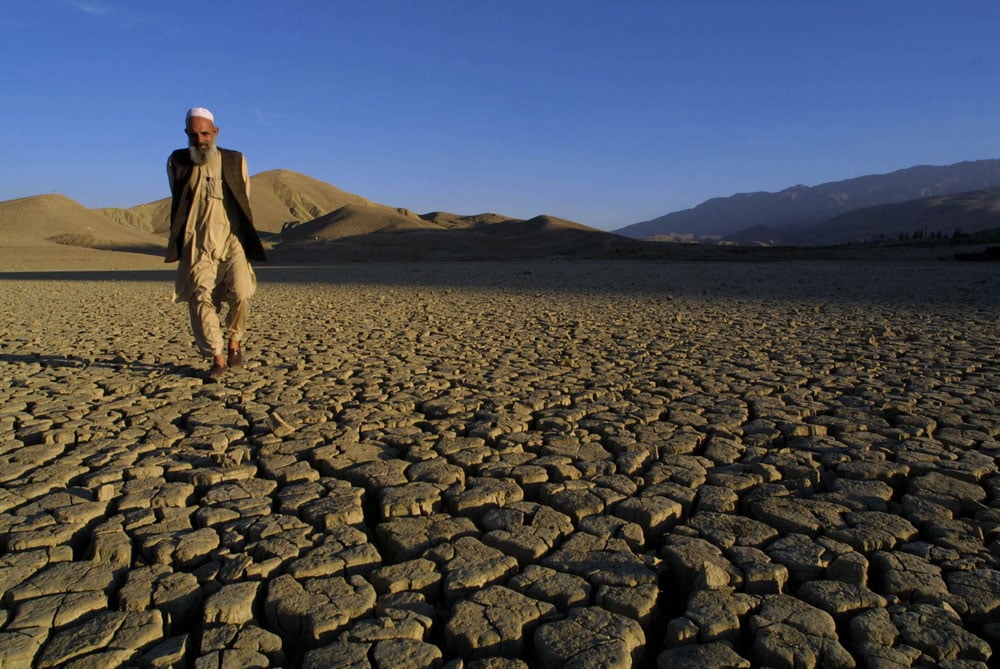Climate change and the varied threats it poses are no longer a matter of speculation. Climate instigated impacts are already evident across the world, including in South Asia, which is home to nearly a quarter of the world's population.
The unfolding climate impacts in our part of the world are varied. As average annual temperatures rise, and rainfall patterns change, some of the hottest parts of South Asia are getting hotter, including most of southwestern Pakistan. Rising global temperatures are also causing bigger changes such as rising seawaters, which are leading to increased seawater intrusion and more severe flooding of coastal areas. The threat of melting glaciers, which feed shared rivers like the Indus, the Ganges, and the Brahmaputra, is another major concern.
According to the latest World Bank estimates, climate change is threatening the well-being and livelihoods of up to 800 million people across our region. Recurrent floods and droughts across the region have wreaked havoc and begun to cause massive internal displacement across the region and beyond. Cross-border migration, from Nepal into India, from Afghanistan to Pakistan, and from Bangladesh to India, was already a common phenomenon due to porous borders. Such outflows are poised to increase because of climate change, which can lead to a range of tensions. For instance, more Bangladeshi migrants pouring into India's northeast region will undoubtedly exacerbate tensions between indigenous groups like the Bodo tribe and the Muslim community in Assam.
The link between climate change and political instability is now recognised as one of the most pressing foreign policy challenges of the 21st century. In 2014, the US Department of Defense referred to climate change as a 'threat multiplier' with the potential to intensify the existing challenges of global instability, hunger, poverty, and conflict.
With added water and food insecurity due to climate change, competition over shared water resources are worsening already fraught relations in South Asia. There is evidence of extremist elements using climate-related stresses to further their own myopic agendas, such as Hindu nationalist groups, who often want India to punish Pakistan by turning off its water supply.

All the countries in South Asia are struggling to contend with climate change at the national level despite numerous political and resource challenges. Yet, there is scant evidence of formulating policies or strategies to deal with these complex challenges at the regional level. International donors supporting climate and resilience building in South Asian countries have also done little to identify pathways for cross-border collaboration.
The South Asian Association for Regional Cooperation (SAARC) has expressed sporadic concern about combating climate change and its security risks, and formulated several declarations, but most of these are either not operational, or are yet to be ratified.
To tackle climate change, our policy and decision makers need to move beyond kneejerk relief and rehabilitation efforts, and adopt mitigation policies which address mutual concerns of all the countries in the region. These shared concerns include management of shared waterways to putting in place mechanisms to contend with climate refugees. Evidence suggests that integrated water management of major river basins, like the Indus, is a much more sustainable approach than the bifurcation of its waterways, which is how these waters have been shared until now.
At present, all we have is a to-do-list. But if leaders in the region show some foresight, they can operationalise a much talked about regional food bank. More effective early warning systems can also be developed based on increased data sharing. It is also possible to formulate to better manage regional migrations and to find more amenable solutions to existing water disputes.
Adopting a more holistic approach to climate change challenges in South Asia thus offers possibilities for boosting regional cooperation, confidence and peace building efforts. One just hopes that peacemakers and environmentalists will be able to avail some of these opportunities and help avert further tensions and human suffering across the South Asian region.
Ali is a development anthropologist


